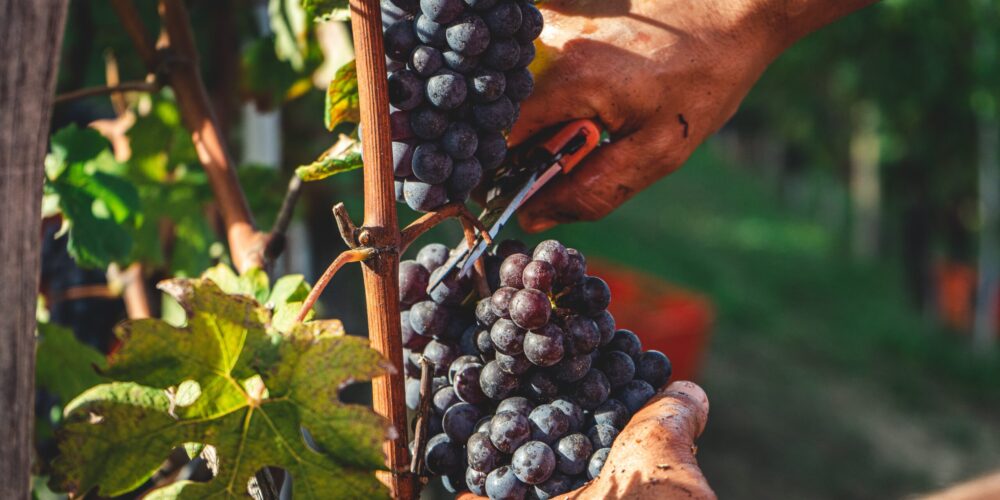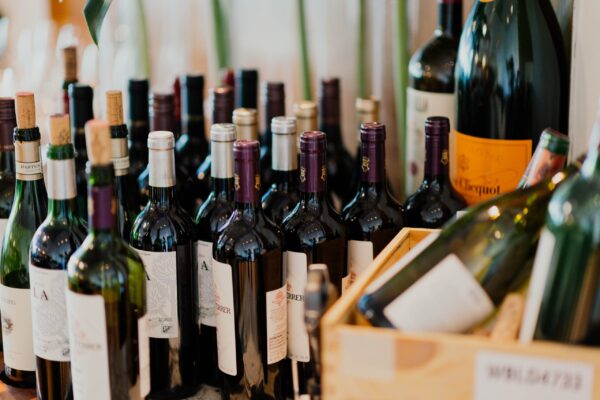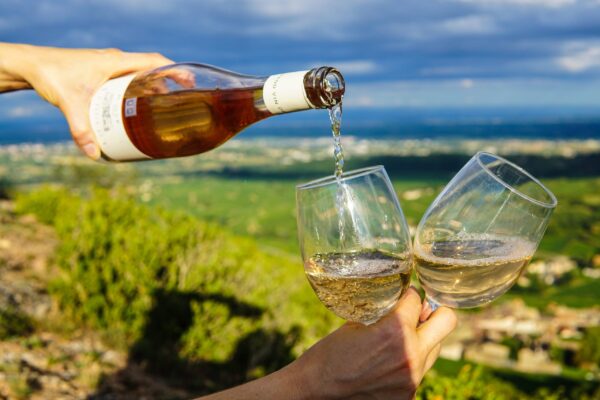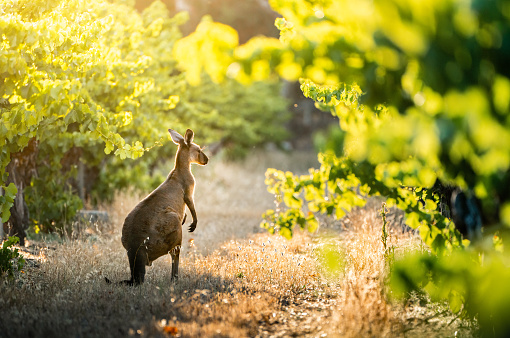Following on from our article Wine Regions of France: Varieties, Appellations and Regional Specificities – Part 1, here we continue our tour of French wine regions. In this second part, we will be looking at the specific characteristics of a range of rich French wine terroirs, from Provence to southwest France, through Bordeaux, the Loire Valley and Corsica.
Provence
The wine region of Provence enjoys an ideal climate with sunny, warm and dry conditions. The Mistral wind blows from the land towards the sea and protects the vines from disease and humidity. In this region, the main grape varieties are Grenache, Cinsault and Syrah, which are used for the production of Rosé in particular. You can also find Mourvèdre and the lesser known grape Tibouren.
Provençal rosé is known for its very pale colour, and shows fruity, refreshing aromas of apricot, peach and even floral, garrigue-like notes.
There are four sub-regional appellations:
- AOP Côtes de Provence (with some wines bearing the complementary geographical demoninations DGC Fréjus, DGC Lalonde, DGC Pierrefeu, DGC Notre Dame Des Anges and DGC Sainte Victoire)
- AOP Coteaux d’Aix en Provence
- AOP Coteaux Varois en Provence
- As well as these village appellations of AOC Bandol, AOC Cassis and AOC Bellet…
Languedoc-Roussillon
Welcome to France’s biggest wine region and one of the largest in the world. This region has five main black grape varieties: Grenache, Carignan, Syrah, Mourvèdre and Cinsault. It is France’s most southerly wine region reaching as far as the Pyrénées-Orientales region bordering with Spain.
Like Provence, this region enjoys a warm, dry climate that is perfectly suited to winegrowing. It produces very concentrated, solar wines.
The Languedoc has a number of well-known and highly reputed sub-regional appellations, such as Saint-Chinian, Corbières and Pic-Saint-Loup. Village appellations are also part of the picture, with La Clape, Fitou, and Minervois, to name a few. The Languedoc also produces some sparkling wines, like the famous Blanquette de Limoux made from Mauzac and Chardonnay or Chenin.
Finally, in the most southerly part of the region, the Roussillon, you find fortified wines like AOP Banyuls, AOP Maury and AOP Muscat de Rivesaltes, as well as dry wines with appellations like AOP Collioure, AOP Maury Sec and AOP Côtes du Roussillon. Wine tourism has helped build the notoriety of the region, with many tourists coming to wander the vineyards and visit wineries for tastings.
South West
The South West Vineyards region is home to 16 protected denominations of origin (AOPs in French) and 11 protected geographical indications (IGPs in French). There is also a wider regional IGP, IGP Comté Tolosan.
The climate is mild and damp to the west of the area with a temperate oceanic influence. In spring, rainfall can be high, but autumn is generally sunny and dry. In the north-westerly vineyards, a continental influence predominates with harsher winters. The south of the region is more Mediterranean in terms of climate, with hot, dry summers.
This impressive region has no less than 300 different grape varieties, of which some 120 are native to the area. While the main varieties are planted in similar proportions to the neighbouring region of Bordeaux, many unique and ancestral varieties can also be found, such as Tannat, Côt (Malbec), Duras, Braucol, Négrette, Colombard, Mauzac, Len de Lel and Ondenc.
Some of the most well-known appellations are Cahors, Pacherenc-du-Vic-Billh, Madiran, Fronton, Marcillac and Gaillac.
Bordeaux
The Bordeaux wine region has a world-class reputation built on two main grape varieties: Merlot – which accounts for 66% of all Bordeaux grapes – and Cabernet Sauvignon – accounting for 25%. Of course, Bordeaux’s specifications also allow Cabernet Franc, Petit Verdot, Malbec and Carménère. On the white wine side, 45% of Bordeaux’s white grapes are Sémillon and 43% are Sauvignon Blanc.
Bordeaux has some 44 appellations and seven wine regions, and its vineyards and châteaux form part of a UNESCO World Heritage site.
More often than not, the area is referred to in terms of Right and Left Bank. On the Right Bank, you find the Libournais with the appellations of Saint-Emilion, Côtes de Bourg, Côtes de Blaye, Fronsac and so on. And on the Left Bank you have the Médoc, with many of Bordeaux’s most pretigious wines, like Margaux, Saint-Estèphe, Saint-Julien, and Pauillac.
To the south of the Medoc, you find the Graves area which has a mostly gravel soil with varying proportions of sand and clay. This area is home to some outstanding appellations like Pessac-Léognan, Cérons, Barsac and Sauternes.
Last but not least, you have the area between the two banks – known as Entre-Deux-Mers – where you also find AOC Côtes de Bordeaux and AOC Loupiac.
Loire Valley
The Loire Valley UNESCO World Heritage site runs along the vast Loire river and is home to vineyards producing an unparalleled array of wines.
Classic Loire varieties include Melon B. (30%), Sauvignon Blanc (28%), and Chenin (27%). Cabernet Franc accounts for 56% of all black grape plantings and is the traditional grape used in Anjou and Saumur reds.
The very diverse range of subsoils and the Loire Valley’s temperate climate allow the production of all styles of wine; dry white wines are most common, although sweet wines are made as well. Some famous appellations include Muscadet, Sancerre, Pouilly Fumé, Coteaux du Layon, Bonnezeaux, Coulée de Serrant, Jasnières, Saumur Champigny, Chinon, Anjou Villages Brissac, Savennières and Vouvray.
Corsica
This small-ish island has some 5,800 hectares of vines, with nine AOPs and one IGP. Corsican rosé accounts for an impressive 70% of production, followed by reds which represent 17%, with white and sweet wines making up the rest.
Corsica has 33 unusual varieties like Niellucciu, Sciaccarellu, Vermentinu, Aleaticu, Biancu Gentile and Muscat Petits Grains.
The terrain climbs as high as 2,700 metres above sea level with very steep hillsides. There are many terroirs with eclectic characteristics, which are reflected in the nine different AOPs :
- The regional appellation AOP Vins de Corse
- AOP Patrimonio, a cru in the north of the country on a subsoil of granite rock, AOP Ajaccio, another cru on granitic and river alluvium
- The village appellations AOP Corse Coteaux du Cap Corse, the most northerly appellation on shiny schists and green ophiolite rock
- AOP Corse Figari, the most southerly appellation on a granite terroir
- AOP Corse Sartène, in the south west on granite
- AOP Corse Calvi
- AOP Porto-Vecchio
- The fortified wine appellation AOP Muscat du Cap Corse.
Learn more
Continue your vineyard exploration and discover South Africa’s beautiful wine regions. Read article



